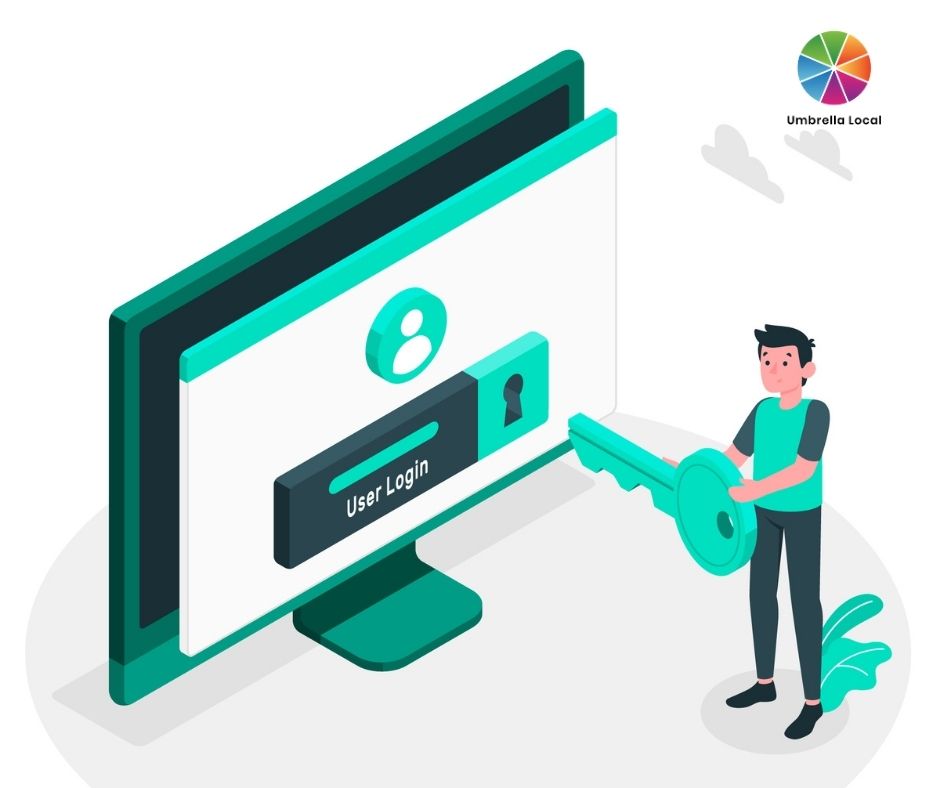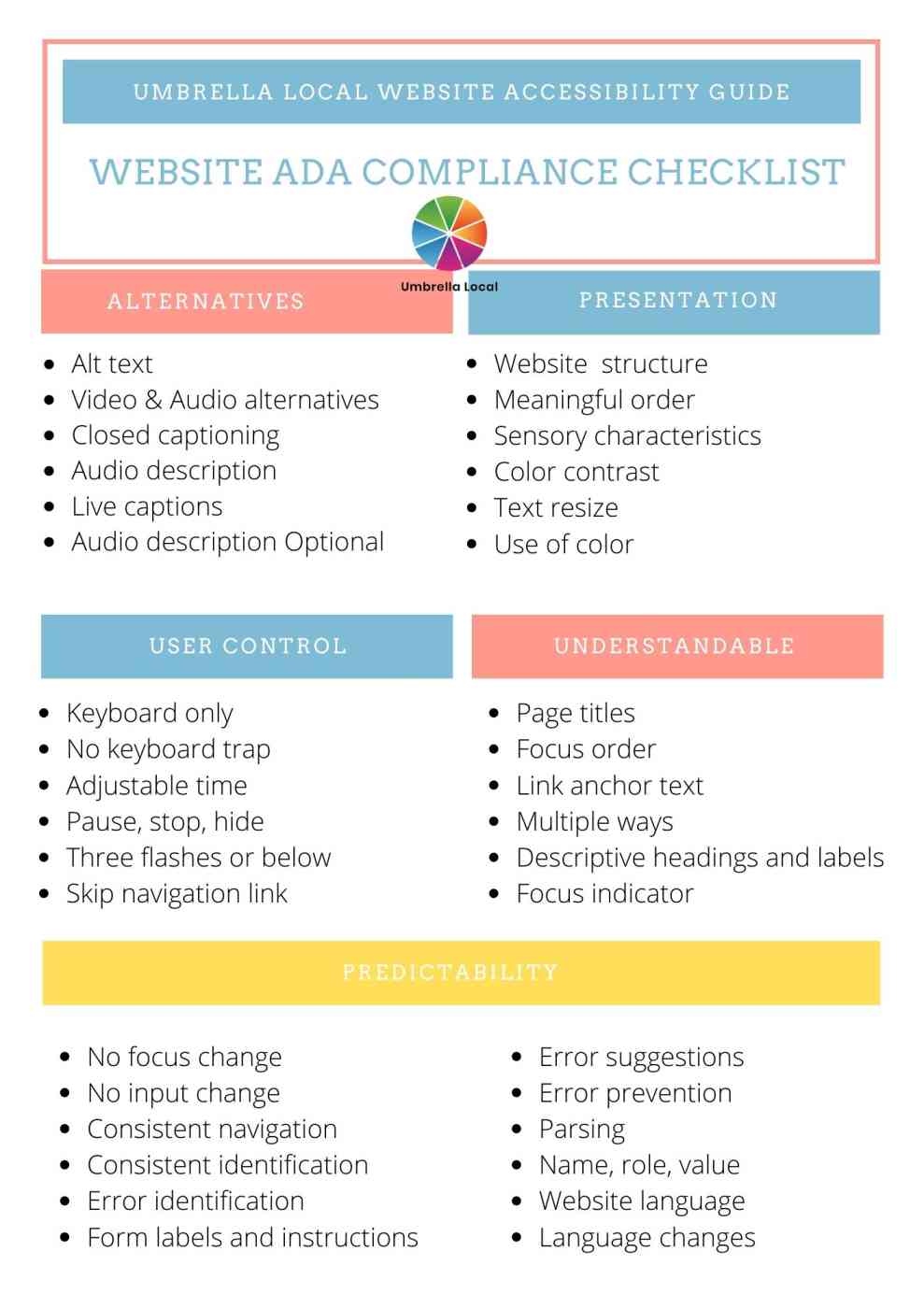You are here: Home / Blog / Here’s How Website Accessibility Can Protect Your Business from Lawsuits

By Karen Hungate on Dec 1, 2020

“The power of the World Wide Web is in its universality. Access by anyone and everyone regardless of disability is the most important aspect.”
– Tim Berners-Lee
Recent CDC data indicates that about 61 million individuals residing in the United States above the age of 15 live with some form of disability, including deafness, blindness, etc.
That being said, let’s say if you open a fast-food restaurant, you’d want it to be welcoming to everybody, wouldn’t you?
What if a blind person visits your clothing store and finds himself lost due to accessibility issues? You wouldn’t want that, right? Instead, what you can do is appoint one of your staff members to help him get what he wants and make sure that he enjoys his time there. That’s how you will be delivering him an outstandingly enjoyable experience. And in no time will you have won yourself a loyal customer.
While it’s vital to make sure that your local shop is easily accessible to anyone and everyone, here’s the question about your online business:
“Does your website meet the ADA website accessibility standards?”
Can people with disabilities or limitations easily able to access your website’s content plus information without facing any hurdles?
If they cannot, you probably may be missing out on a huge chunk of your target audience. In addition to this, you may be struck with a lawsuit under Title III of the Americans with Disabilities Act. Although there’s no concrete mention of websites anywhere, title III of the ADA is interpreted by the US courts to apply to websites.
Did you know that nearly 2,235 web accessibility lawsuits were filed in 2019? These lawsuits can cost brands or organizations anywhere between $15,000 and $150,000. And this sum doesn’t even include the money brands need to spend to fix their website accessibility issues.
In this blog post, let’s take a brief look at what website accessibility is and why it’s important for every online business out there. Plus, we’ll also be shifting our focus towards WCAG 2.0 guidelines to help you understand the changes you need to make to protect your business from any potential lawsuits.
When web tools and websites are designed and coded the right way, everyone, especially the ones with disabilities, can use them. However, disabled people face a hard time accessing the website and its content, due to which the U.S. Supreme Court ruled out all websites to be accessible to everyone.
Our website accessibility services include features like text reader, keyboard navigation, blinks blocking, different contrast display options, image descriptions, accessibility toolbar, and so much more to help you make sure that your website meets the WCAG guidelines. These website accessibility standards have been published and are managed by Web Accessibility Initiative (WAI) of the World Wide Web Consortium (W3C).
Cedric Bishop, a visually impaired and legally blind individual, filed a class-action lawsuit against the E-commerce giant Amazon, claiming that their website is inaccessible to the blind folks. He stated that the lack of descriptive alt text for the images and other elements makes it literally impossible for the people to use screen readers to select and buy products.
Another story – Guillermo Robles, another blind individual, due to being unable to order pizzas through Domino’s official website as well as an application even after using the screen-reading software, sued Dominos over it.
Whether you are in charge of a small business or a large multinational organization, you should make sure that your website isn’t preventing anyone from navigating, consuming, or obtaining any information that you are sharing. That’s how you will be abiding by the WCAG, helping you avoid any legal trouble.
Apart from avoiding legal troubles, your website should meet the website accessibility standards because it plays a major role in boosting a business’ SEO efforts.
Google and other search engines focus on delivering the best possible experience and relevant information to anyone who hops onto their platform and types in their query. Hence, it’s essential to ensure that your website delivers the best possible user experience to everyone, helping you position yourself as relevant and friendly in front of Google.
Google’s Site Crawlers will take into consideration various factors to determine your website rankings, out of which one of the most vital ones is website accessibility. Your website visitors, especially the blind ones should easily be able to navigate your website, feel comfortable consuming the content, ordering products or services. If you don’t focus on these aspects, then you’ll witness a gigantic increase in the bounce rate, which isn’t a good sign for rankings.
Alongside this, it’s important to implement intuitive design and provide quality content that’s accessible by all. This includes implementing the technical practices like utilization of the right semantics, an organized header structure, descriptive alt-text in all visuals, and title tags.
Being compliant with the website accessibility standards will not only boost your website rankings, but it will even have a gigantic-sized positive impact on your brand reputation.
Hence, if you haven’t already started focusing on website accessibility, then now’s the time to hop on the train.
WCAG 2.0 Guidelines state that your website should be:
Let’s look at each one of them one-by-one.

To avoid any potential lawsuits and boost your SEO rankings, now’s the time to make your website accessible and make sure that it’s ADA-compliant. And that’s exactly what Umbrella Local is here to help you with.
Right from thoroughly reviewing your website to delivering ADA certificate and year-round protection, we’ll be making your website accessible to more than 61 million Americans with disabilities.
And that’s not it.
We’d like to share our website accessibility checklist to help you and your partners ensure that your website is easily accessible and usable by everyone out there.
So, what are you waiting for?
Use our free tool to get your score calculated in under 60 seconds.